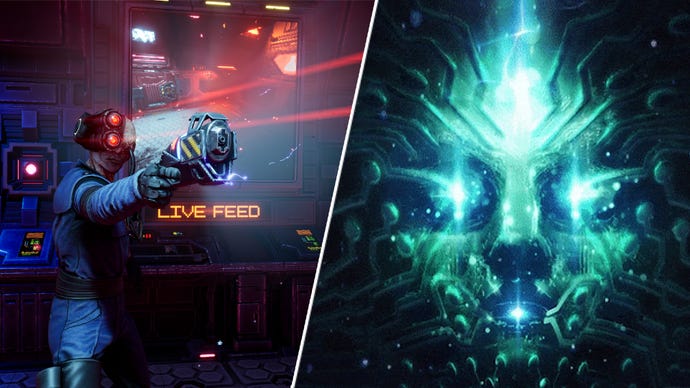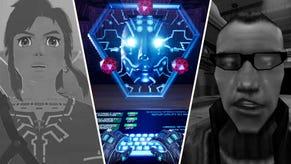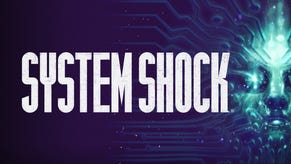System Shock Remake review: A foundation for the new generation of immersive sims
Nightdive Studios may have taken seven years, but it's finally managed to do the impossible and thread the unlikely line between reboot and remake.
It’s difficult to imagine a more daunting proposition for a remake than the original System Shock. It’s arguably the game that truly launched the greatest boom of immersive sims in history – a genre whose fans are notoriously demanding, despite never having really been able to come up with a universally agreed definition of what an 'immersive sim' even is.
It’s a genre of such a specific time and place, games that possess intrinsic vibes of fat chunky keyboards, bulky cardboard boxes and 640x480 CRT screens. How do you channel that in an era of ultrawide monitors and digital only games? Does anybody even want it? Warren Spector himself, one of the key creative figures in the heyday of PC games about rifling through shelves and reading emails, couldn’t get a tumultuous System Shock 3 out the doorhttps://www.vg247.com/system-shock-3-tencent before the whole endeavour imploded.
This isn’t developer Nightdive Studios first wrangle with the licence – after acquiring the IP in 2015, they promptly released System Shock: Enhanced Edition, a slightly prettied up version of the original optimised for modern systems. At the same time, it started development on what was intended to be a ground-up remake. Here we are, a full seven years of stop-start development, engine changes, shifts in overall direction, and scope bloat later, and it should be considered a miracle that the game has been released at all. Never mind the fact that it’s an absolutely groundbreaking work of visual design that elevates the original in every possible way without losing anything in the process.
This System Shock is every bit a reboot as much as it is a remake, following all the same beats but with enough additions and variations to keep veterans on their toes. You are an anonymous hacker, shanghaied by a shady executive to Citadel Station, a corporate haven in orbit above Jupiter. He offers you your freedom and a tasty neural implant in exchange for your help in removing the ethical fail-safes of the station’s managerial artificial intelligence – SHODAN.
Apparently you’ve never seen a single sci-fi movie, so you swiftly take him up on his offer. You wake up six months later and everybody has been turned into mutant goo by a now omniscient SHODAN with delusions of godhood, who is planning to fire a gigantic laser beam at Earth and turn the survivors into a new race of biomechanical terrors to worship her and spread her radiance across the stars.

You’re now trapped in a multi-level labyrinthine megastructure of twisting tunnels, broken doors and wonky elevators – populated by killer cyborgs, mutant hybrids, and homicidal cleaning robots. SHODAN peers at you from the hundreds of security cameras throughout the station, mocking you and your helplessness from screens and releasing enemies from hidden compartments while your back is turned. You are evidently mankind’s only hope, and you have a piece of pipe.
From there, you are more or less on your own. Any concerns that this new version would make things easier are quickly dismissed. There is still no objective marker. Hell, there’s still no explicit objective listed anywhere. You’re still going to need an honest-to-god pen and paper for the various codes and clues that won’t get added to a log. It’s a matter of working your way room by room, filling out your automap, scrounging what resources and weapons you can while trying to figure out what all these blinking lights, levers and switches do. The core loop, once you get into the groove, is still surprisingly chill; the satisfaction of disabling cameras and turning floors that were once daunting and unknown into familiar territory. The illicit thrill of collecting all the garbage and recycling it.
Mechanically, everything that made the original System Shock what it was is still here. While the controls are now closer to a traditional first-person shooter, this is still a game about inventory management. About considering the most cost-effective and safest way to clear a room of hostiles. You’ll be spending most of your time piecing together a way to save the day by collecting scraps of audio logs and emails strewn amongst the corpses, following leads to various terminals and station systems.
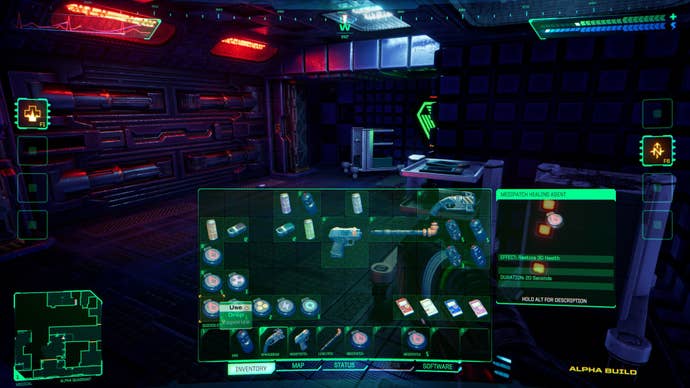
While everything from the level layouts to the general ebb and flow are largely identical to the original, the aesthetics are where Nightdive takes its bigger and bravest swings. Rather than a visual design based on realism, on the standard ugly shininess of most Unreal Engine remakes, here Nightdive has opted for something far more interesting.
The big, colourful pixels that make up the weapons and environments of System Shock perfectly and effortlessly evoke the atmosphere of the original, while allowing enough room for expansion and interpretation. It’s not quite the look of modern boomer shooters, but it definitely channels the appearance of low-resolution late 90s PC games more than it strives for contemporary fidelity. These rooms and corridors, while filled with far more detail, still retain an intuitive readability.
The weapons are where the improvements are most obvious. In the original, most firearms take up a tiny sliver at the bottom middle of the screen. You’re lucky to see anything past the muzzle. Here, every instrument of death you pick up is lovingly turned over in your hands when you first pick them up. They’re chunky and colourful and every action made with them produces big meaty clicks and whirs. They look and feel like something somebody made out of cardboard and LEDs for a halloween party. The reload animations are tactile and over-designed in the best sort of way, displaying the sort of exaggerated physicality of those videos of the guy reloading toasters and other household appliances. Weapons vent steam out of access ports, arcs of electricity ripple over them and cheap plastic ammo displays are covered in scratches and finger smudges.
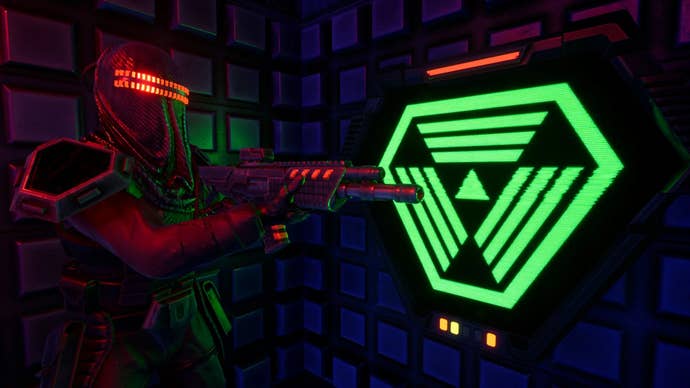
It would be easy to dismiss all of this as superfluous window dressing, but it all bolsters the world-building. The weapons range from industrial tools to cobbled-together laser beams and mass produced security firearms. They all fit into this oddly colourful horror game, set far into the future but filled with oddly anachronistic technology like USB sticks and LCD displays. You basically have a Nintendo Power glove strapped to your arm. It’s a world of faux 80’s low-tech cyberpunk – a frequently common affectation in pop culture that can so often come across as garish or lazy, but here is executed perfectly. It makes sense.
As a remake, this improves on everything that could frustrate modern players without detracting from the experience, simplifying the controls and inventory management to a contemporary standard while retaining all the functionality and atmosphere. As a reboot, it’s an impressively confident foundation for a new generation of immersive sims.
With its System Shock, Nightdive has built not only the definitive way to experience one of the most foundational works of an incredibly specific and daunting genre, it’s created the definitive entry point for players who want to get into games about crawling through vents and collecting keycards but are unsure of where to begin. Spiritual successors such as the 2017 Prey or Void Bastards may have done an excellent job of carrying the torch, but it’s a true delight to go back to where it all started.
Pros
- Perfectly re-imagined for modern players
- Simplified and standardised without eating into System Shock's unique heritage
Cons
- Minor bugs that causes dead bodies to bounce around whenever you reload a save, which isn't ideal for a horror game
- No big environmental or narrative surprises for veterans
Version Tested: PC. Copies of the game were provided by the publisher.
